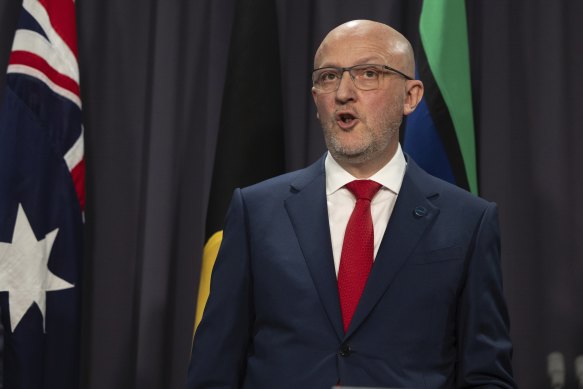- Analysis
- Politics
- Federal
- National security
This was published 7 months ago
The person keeping ASIO awake at night
Here’s the frightening scenario Australian intelligence officials fear could soon play out in one of Australia’s biggest cities.
A man living in the suburbs grows increasingly angry that he cannot enter the overheated property market. Looking for someone to blame, he turns to migrants who are supposedly driving up house prices. Adding to his sense of grievance is the idea that the world is an increasingly disordered place, one in which governments are failing to maintain a sense of control. Deep down a rabbit hole of radical online content, the man decides to take matters into his own hands and becomes violent.

ASIO boss Mike Burgess: “Anti-authority beliefs are growing. Trust in institutions is eroding. Provocative, inflammatory behaviours are being normalised.” Credit: Alex Ellinghausen
The increased possibility of such a lone-wolf terrorist attack, as outlined by intelligence officials to reporters at a briefing in Canberra on Monday, helps explain why Australia’s top spy agency, ASIO, has raised the terrorism threat level to “probable”.
It was only in November 2022 that ASIO dropped the terrorism threat level from “probable” to “possible”, the lowest it had been in eight years. While not ruling out the possibility of an isolated terrorist attack, the updated assessment signalled a more benign security environment – one attributed to the declining allure of radical Islamism and the conspiratorial thinking that flourished during the COVID-19 pandemic. Espionage and foreign interference had officially supplanted terrorism as the nation’s principal national security concern.
Yet just a month later, Australians recoiled in horror at what was later classified as the nation’s first fundamentalist Christian terrorist attack: the killing of two police officers and a neighbour by three radicalised residents in Wieambilla, Queensland. If the terrorism threat had dissipated, it had certainly not disappeared.
In April, a 16-year-old boy was accused of terrorism for stabbing a bishop during an Assyrian worship service in western Sydney. This came soon after the mass killings at Bondi Junction Westfield, an incident not judged to be a terrorist attack, but that nevertheless confirmed the carnage and panic one disturbed individual can inflict upon society.
Global events also point to the increasingly febrile and risky times in which we live. In the United States, the Republican Party’s presidential candidate, Donald Trump, was almost assassinated by a registered Republican. In the United Kingdom, widespread far-right violent protests have broken out thanks to misinformation spread online following the killings of three children in the British town of Southport.
“Anti-authority beliefs are growing. Trust in institutions is eroding. Provocative, inflammatory behaviours are being normalised,” ASIO boss Mike Burgess said on Monday when explaining the new threat level.
“Individuals are embracing anti-authority ideologies, conspiracy theories and diverse grievances. Some are combining multiple beliefs to create new hybrid ideologies.”
It’s a different situation to a decade ago, when national security and law enforcement agencies were keenly focused on the threat of radical Islam. Today, the threats are much more diffuse and inchoate, with extremist views increasingly hard to place on the conventional left-right spectrum.
Notably, the word Islam was not used during Burgess’s press conference with Prime Minister Anthony Albanese - except once in the context of rising Islamophobia and anti-Semitism.
Ratcheting up the temperature are tensions triggered by the war in Gaza, which Australian intelligence officials say played a “very significant” role in the new threat assessment.
While Burgess said the assessment was not a direct response to events in the Middle East, he stressed that the Israel-Hamas conflict had “fuelled grievances, promoted protest, exacerbated division, undermined social cohesion and elevated intolerance”.
As Burgess implied, it is not hard to imagine acts of vandalism we have seen recently – such as at Jewish Labor MP Josh Burns’ electorate office, where windows were smashed, fires lit and offensive slogans sprayed – morphing into something more violent and deadly.
Without naming them, Albanese took particular aim at the Greens, accusing his political opponents of promoting misinformation and encouraging extremism by suggesting the Australian government was complicit in genocide.
Rather than hyping up an unlikely threat, if anything the upgraded ASIO terrorism threat assessment is a lagging indicator, a reflection of what anyone taking an interest in the world could observe.
The relative sense of calm that existed two years ago is gone, replaced by a more complex, divisive and dangerous era in which the risk of political and religiously motivated violence is all too real.
Cut through the noise of federal politics with news, views and expert analysis from Jacqueline Maley. Subscribers can sign up to our weekly Inside Politics newsletter here.